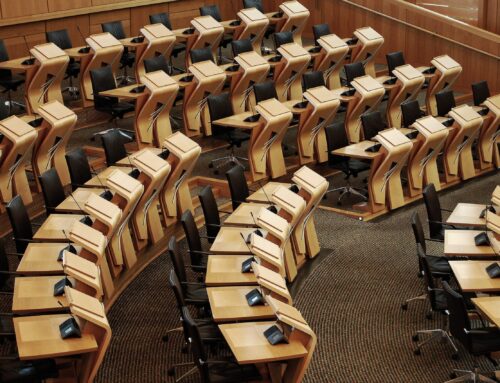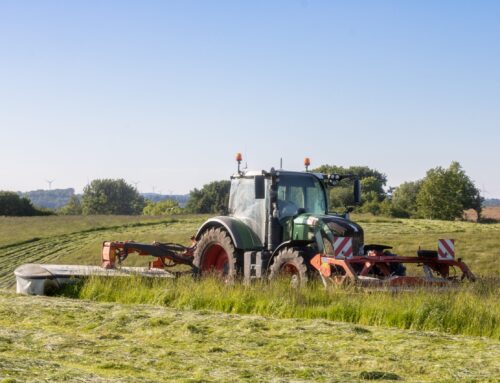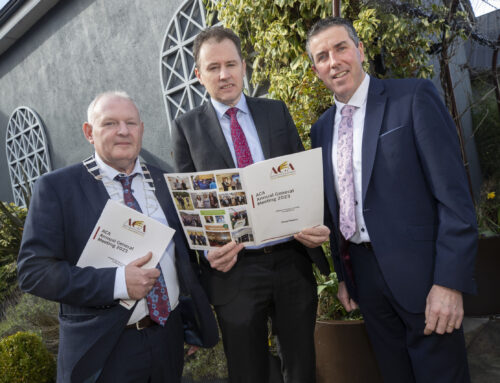Earlier this week sheep farmers mounted a protest against the low margin returns that have hit farms across the country over the last couple of months. The government is being asked to financially support the sheep industry in the wake of an income crisis. Agri Insider spoke with Vincent Roddy of the INHFA, Pádraic Fogarty of IWT and Kevin Comiskey of the IFA for their reaction.
Background
Firstly, what are sheep farmers and organisations looking for? They are calling for improved prices, better marketing of sheep meat by Bord Bia and higher Government payments for their produce in response to incredibly low prices. Inflation pressures are impacting demand for lamb in key export markets and also on the domestic market, with weaker demand in particular for larger and more valuable cuts according to Bord Bia market trends.
Asked if it was fair to look for government support, with market conditions going a long way in dictating price, Kevin Comiskey, Chair of the Irish Farmers’ Association National Sheep Committee responded: “It is. I certainly make no apologies in looking for government support. If it was any other sector, the grain sector, the beef sector, the pig sector….they get the support so I can’t see why the sheep sector doesn’t either. It’s the second largest sector going on farmer numbers with 36,100 and it’s worth €476 million to the economy in 2022. We think we’re well within our rights.
“The IFA sheep committee going back as far as 2016 secured €25 million which worked out at €10/ewe for all eligible ewes that applied for it. From then on, we were looking for it to be topped up to €30/ewe, so our ask for the last eight years for that to be topped up…that’s why we’re very disappointed in the Minister and the new CAP.”
History of protest
This income crisis is unfortunately nothing new, as sheep organisations like other sectors have asked for government support before. In 1995, spokesperson on Agriculture, Food and Forestry at the time, Brian Cowen, in a Dáil Éireann debate stated that ‘…there is a problem of crisis proportions in the Irish sheep industry.’ In 1999, the Irish Farmers’ Association organised a demonstration outside Department of Agriculture offices to highlight the sharp drop in lamb prices demanding more assistance from the EU.
2008 saw sheep farmers once again returned to Kildare Street asking former Minister for Agriculture Brendan Smith to deliver them a €20 per ewe payment, while in need of a major aid package. Recent memory points to 2019 when The Irish Cattle and Sheep Farmers’ Association held various protests outside meat processors to voice their concerns over basement lamb prices. Similar to today, Meat Industry Ireland remarked in 2019 that weak demand for lamb in key markets was one of the reasons behind the fall of lamb prices in Ireland.
Government subsidy
The pattern here speaks for itself. When the sheep sector, like other agricultural sectors, hits hard times, the government is asked to intervene and support falling incomes. A legitimate question….Is it fair to ask the government for more support when sheep prices are likely to fall in the future?
President of the Irish Natura and Hill Farmers Association (INHFA), Vincent Roddy shares the same view as Kevin Comiskey in looking for government support. He said: “I believe that if you’re going to support other sectors and people in other areas, I think it’s not unreasonable to look for support. You have to view it in the context that money delivered to farmers is money being spent in rural Ireland.”
There are other ways to look at the value of public money. Pádraic Fogarty is an ecologist and campaigns officer with the Irish Wildlife Trust. He said: “I’m not against the taxpayer supporting farmers if farmers are delivering a public good. I just feel the system is not functioning because it’s failing the environment,I think that’s very well established. It’s failing on farmers’ incomes which the sheep protests this week is also indicative of.
“It’s also failing on I think on food security because the subsidy regime was set up to create food security for Europeans but I mean we’re seeing that the sheep price is falling due to a lower demand in China. An awful lot of what we set up this subsidy system for, has kind of lost track of itself.
“It’s not that I have a particular view on whether the Minister should interfere with the food price in this particular instance but it if we’re going to have a subsidy system that is for food security, keeping farmers on the land and rural areas and it’s supposed to be protecting the environment, then we have to start doing things differently. We have to start not just shoring things up like we seem to be doing time in and time out but actually putting public money into transforming the system so that it starts to deliver things it was supposed to deliver in the first place.”
Present
Over the last few days, the ICSA sheep chairman Sean McNamara said he will be looking for answers from the processors, retailers and the Government. He said he is also demanding an annual ewe payment of €35/ewe along with “an exceptional aid payment of €20/hd for up to a maximum of 500 head of lamb which have been sold at significantly reduced prices over the period August 2022 to February 2023”.
These demands are in response to Teagasc and Bord Bia’s recent forecast that sheep farmers are facing the prospect of €7/ewe return for this year while annual ewe payments presently stand at €12/ewe. Under growing pressure from farming organisations, Minister McConalogue has asked the Food Vision Beef and Sheep Group to meet to discuss the sector.
Future
The sheep sector like the beef, dairy and pig sectors all face difficult months ahead with inflation driving input costs northwards. Vincent Roddy said: “The problem here is exceptionally high costs. I mean that’s what’s killing us. The price isn’t reflected in the increase of costs.”
With the costs spiraling out of control and other external market conditions affecting producer price, it seems that a repeat of government intervention is unavoidable and it may be an ominous sign for many sectors vulnerable to price fluctuation.
For more engaging content and to watch agri videos for FREE, visit agriinsider.tv





